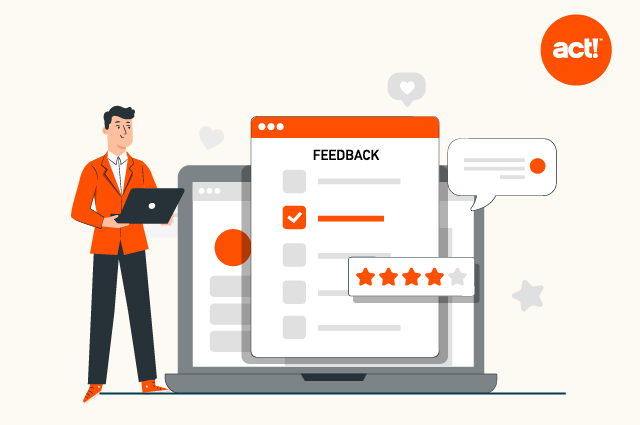
Are you looking for ways to minimize churn rates and win more loyal customers? Or perhaps, you want to boost the return on investment (ROI) of your marketing and sales efforts?
In either case, overly pushy sales tactics won’t get you too far in a competitive market where your potential customers have a sea of options in front of them. In a consumer-driven market, it’s only natural that customers don’t have the patience to deal with negative purchase experiences or service limitations during the purchasing process. Did you know? 76 percent of consumers will stop doing business with a company after one negative customer experience.
In today’s competitive climate, how do you differentiate your business and attract and retain customers? The key is to embrace a customer-centric attitude and impress customers at every stage of the buyer’s journey. It’s easier than it sounds!
Let’s take a closer look at what customer-centricity is and how you can develop a customer-centric business strategy.

What does a customer-centric company look like?
Customer-centric organizations put customers at the heart of everything they do. It’s in sharp contrast to the traditional approach of prioritizing revenue and profits and treating customers as numbers in sales reports.
This type of approach involves outlining and implementing a positive customer experience from the first interaction with your brand to post-purchase. The idea is to build long-lasting relationships by supporting customers at every stage of the sales funnel.
The best customer-centric companies use tools like customer relationship management (CRM) platforms to make customer data accessible throughout the organization and eliminate departmental silos. Additionally, they use cutting-edge tech innovations like artificial intelligence, predictive analytics, and virtual or augmented reality to improve customer experience.
From Amazon and Apple to IKEA, some of the world’s leading brands are built on customer-centricity. For instance, Apple strives to anticipate customer needs and builds products that address those needs.
Why does customer-centricity matter in 2024?
Did you know that improving the customer experience boosts sales revenue by 2 to 7 percent and profitability by 1 to 2 percent? Still, high revenue and profits shouldn’t be the only reason to prioritize customer-centricity.
Instead, keep in mind that 63 percent of consumers are willing to pay more for better customer service. A customer-centric business strategy helps you impress potential and existing customers and win their trust. Also, when you value your customer base and address their pain points, you foster customer loyalty by building trust and this becomes a key differentiator for your business.
The core of customer-centricity is long-term relationships, which, in turn, help you turn loyal customers into brand advocates. It provides a cost-effective way to drive brand awareness and sales through word-of-mouth recommendations. Additionally, it can help improve your product/service offerings and harness new business opportunities.
With 80 percent of business leaders planning to prioritize customer experience, it’s high time to define and implement a customer-centric business strategy.

How do you develop a customer-centric strategy?
A customer-centric approach involves more than building excellent products or providing prompt customer support. Instead, you must focus on delivering an exceptional experience across each touchpoint before and after a purchase.
Here are a few effective tips to build a customer-centric marketing strategy:
Make it a part of company culture
First things first—customer centricity isn’t the responsibility of a single department. Instead, you must treat it as an organization-wide initiative and make every department accountable.
The best way to do that is to build it into the company culture. Define customer-centricity as a core value of your organization and communicate the same to employees to help them align their goals and processes with your company’s overall vision.
Focus on future customer needs
Understanding customer needs and pain points is the foundation of delivering a frictionless purchase experience. However, when it comes to customer-centricity, you must take things up a notch by anticipating what your customers might want or need even before they know it.
Start by mapping the customer journey to understand how they move across the sales funnel. Collect customer behavior data and purchase history to identify seasonal patterns. Additionally, monitor and analyze market trends to understand how customer preferences and needs might evolve in the future.
Ensure easy access to customer data
Did you know that 86% of B2B and 71% B2C customers expect businesses to be familiar with their personal details during a service interaction? They don’t want to spend time repeating basic information about their purchase, service request, or complaint every time.
It’s up to you to ensure seamless transfer of customer data among various departments and eliminate friction from the purchase experience. And that’s precisely where a solution like Act! CRM steps into the picture.
With Act!, you can create a centralized dashboard of customer data to serve as a single source of truth and provide marketing, sales, and support teams with a unified view of every customer. That, in turn, ensures seamless interactions, regardless of whether a customer is talking to a sales rep or chatting with a customer service executive.

Be there after the first purchase
How do you treat new customers after they purchase from you? Customer-focused companies strive to deliver a personalized onboarding experience and prompt after-sales support. The idea is to make every customer feel valued, not like just another item you ticked off a to-do list.
You can even use a digital adoption platform that integrates with your CRM system to trigger hyper-personalized onboarding flows. This is a great way to make a stellar first impression on new customers and win their loyalty.
Rewarding customers for purchasing from you is yet another way to win them over. Send free products, offer a service upgrade, or set up a loyalty program — any of these approaches can drive retention rates and repeat sales.
Collect customer feedback
What’s the best way to improve customer experience? While there’s no one-size-fits-all winner, feedback collection is a strong contender. It helps you identify gaps in your existing sales processes and onboarding flows and improve your customer-centric strategy.
From live Q&A sessions and polls on social media platforms to email surveys, there are various ways to ask customers for feedback. You can even conduct in-person interviews or host community events for deeper insight into customer expectations.

Make customer support accessible
If you’re trying to build a customer-focused company, you’ve likely already built a top-notch customer support team. But do customers have to jump through hoops before they can reach out to support reps? If that’s the case, you must look for ways to make support more accessible.
Start by implementing a multi-channel customer support strategy that includes chatbots, social messaging apps, live chat, email, and phone calls. Next, outline the details in a “Contact Us” page that customers can easily access from anywhere on your website.
It’s also a good idea to add your contact details to social media profiles. Lastly, consider using a ticketing system to organize customer requests and provide timely resolution.
Monitor the right metrics
Implementing a customer-centric business strategy isn’t a set-and-forget process. You have to keep an eye on the customer experience and determine whether things are headed in the right direction. The metrics that come in handy here include:
- Churn rate
- NPS (Net Promoter Score)
- CLV (Customer Lifetime Value)
- CSAT (Customer Satisfaction)
Make customer-centricity a reality with Act!
The business benefits of customer-centricity make a compelling case for implementing a company-wide rollout. A system like Act! CRM can help you understand customer needs and purchase patterns to create personalized experiences for your customers.
You can even use Act! to eliminate departmental silos and ensure seamless customer interactions that help build long-term relationships. It also comes in handy for personalizing the purchase experience and monitoring customer-focused metrics like NPS and CSAT.
Start your free trial to see Act! in action and understand how it can help you achieve customer-centricity. No download or credit card is required.






